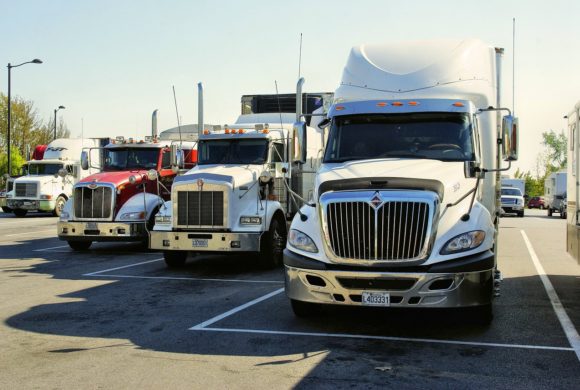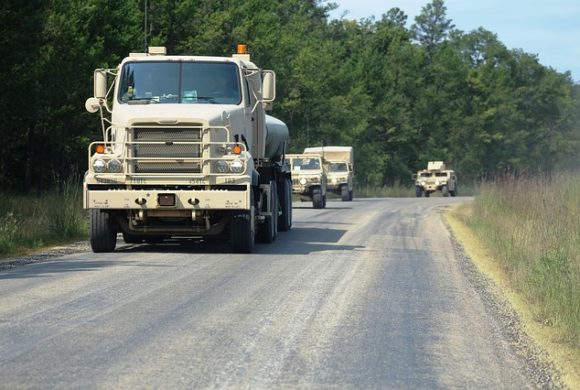
by Queener Law | Jan 16, 2018 | Colorado, Kentucky, Tennessee, Trucking Accident
Following an increase in truck accident fatalities over the past seven years, survivors and safety advocates are urging the Federal Motor Carrier Safety Administration to finalize multiple safety regulations that have been placed on hold. Truck Safety Coalition members attended the nomination hearing of the new administrator of the FMCSA in Oct. 2017. They wanted to draw attention to the importance of a number of safety regulations in the hope that the FMCSA would finalize the rules and begin enforcing them. However, the anti-regulatory environment makes it less likely that the rules will be finalized in the next few years.
Safety Rules at Issue
Despite the push by lobbyists for another delay, the electronic logging device mandate went into effect on Dec. 18 as scheduled. Trucks must now have electronic logging devices installed that track when the trucks are moving. It is thought that the ELD mandate may prevent truck drivers from falsifying their logbooks to get around hours-of-service rules.
Other regulations have not been finalized or implemented, however. A proposed sleep apnea rule that would have required screening for sleep apnea that is similar to what is required of pilots was withdrawn by the FMCSA. Sleep apnea interferes with sleep patterns, causing people who suffer from the condition to feel fatigued. The sleep apnea rule was meant to reduce drowsy and fatigued driving by truck drivers.
Advocates have also been calling for an enhancement in driver training rules to require more hours behind the wheel. The proposed rule that would have required trucks weighing more than 26,000 pounds to have speed limiting devices installed has also not been finalized. The Trump administration is still considering it, and it is uncertain whether or not it will be enacted.
Truck Accident Increases
Truck accidents have increased over the last seven years. In 2016, there were 4.317 people who were killed in accidents involving large trucks. Many of these accidents were caused by some of the issues that the proposed regulations would address. Despite this, it is unlikely that the FMCSA will act to prioritize safety because of the anti-regulatory push in the administration.

by Queener Law | Dec 27, 2017 | Auto Accident, Colorado, Kentucky, Tennessee
Because car manufacturers tend to design their vehicles to pass the existing safety tests, the Insurance Institute for Highway Safety recently instituted new tests that rate cars for passenger safety. In the past, manufacturers had focused on driver safety since that was what the tests looked for. The IIHS asserts that it is important to improve passenger safety so that it is equal to the safety standards imposed for drivers.
IIHS Safety Tests
The Insurance Institute for Highway Safety performs tests each year on newly released vehicle models. The tests are influential and let customers understand how safe the different models are so they can make informed purchasing decisions. Because of the importance of these tests, vehicle manufacturers tend to design their vehicles to pass them. In the past, the tests have focused on the safety of drivers. Recently, however, the IIHS has been concerned about making certain that the manufacturers also design their vehicles to be equally safe for passengers. It added passenger-side front crash tests to its safety testing regimen this year.
Test Results
The IIHS tested 13 vehicles with its new passenger side 40 mph frontal crash test. Of the vehicles that were tested, 10 received good ratings from the IIHS. Out of the remaining three, the Volkswagen Jetta was rated as acceptable while the Chevrolet Malibu and the Volkswagen Passat received ratings of marginal. The IIHS recommends that manufacturers optimize the safety of their airbags and headrests to equalize the safety of vehicles for passengers as well as drivers.
While enhanced safety measures won’t prevent all motor vehicle injuries from occurring, they can help to minimize the risks of serious injuries or fatalities when accidents happen. The IIHS designs its tests so that consumers can use the results as one factor in their decisions about which vehicles to purchase. People who are in the market to purchase new cars may now have access to more accurate safety ratings due to the changes. Because car manufacturers are aware that consumers pay attention to IIHS ratings, they might be led to add enhanced features to their vehicles to make them safer for all passengers.

by Queener Law | Nov 13, 2017 | Auto Accident, Colorado, Kentucky, Tennessee
The Centers for Disease Control and Prevention reports that approximately 90 people die each day in the United States due to motor vehicle crashes. That number is almost double the number of roadway deaths of any other high-income country. Between 2000 and 2013, the U.S. reduced highway deaths by approximately 31 percent. Many analysts agree that vehicle crash fatalities could be further reduced in the U.S. by adopting proven strategies.
Who is at highest risk?
According to a report by the World Health Organization (WHO), 90 percent of crash-related deaths occur in low- and middle-income countries. In high-income countries like the United States, people from lower socioeconomic levels are more likely to be involved in a fatal car crash. Young males are three times more likely to die in a vehicle crash than young females.
Common causes of vehicle deaths
To effectively reduce the number of highway deaths, it is important to understand the causes. Doing so can help individuals, vehicle manufacturers and lawmakers address safety issues to minimize the risk of crashes and prevent serious injuries and deaths when accidents do occur.
- Speed is directly related to both the likelihood of having a crash and the probability that deaths will occur in the accident. A personal injury attorney can advise pedestrians or passengers who have been injured due to speeding of their rights and options.
- Driving under the influence of alcohol and other psychoactive drugs accounts for nearly one-third of all U.S. traffic-related deaths. A person driving after taking amphetamines is five times more likely to be in a fatal accident than someone who hasn’t.
- Proper use of safety equipment can significantly reduce fatalities. Wearing a motorcycle helmet reduces the risk of death in an accident by 40 percent. Wearing a seat belt reduces the risk of death for front seat passengers by as much as 50 percent.
- Distracted driving is an evolving problem as new technologies emerge. Drivers using phones are four times more likely to be in a crash. Drivers using hands-free devices are not much safer.
What can be done?
Erin Sauber-Schatz, Ph.D., M.P.H. is a team leader for the CDC’s National Center for Injury Prevention and Control. Erin says 10,000 lives could be saved every year by eliminating alcohol-impaired driving. An additional 3,000 deaths could be prevented by increasing seat belt usage to 100 percent.

by Queener Law | Oct 9, 2017 | Kentucky, Personal Injury, Tennessee
Defective toys that have been recalled are still being sold by some online retailers, according to a recent study. It is important for parents to be aware of the toys that have been recalled so they can remove them from their homes. The toys that were found in the survey pose multiple hazards, including fires, ingestion dangers and potential neurological issues caused by lead paint. When children are injured by defective toys, a personal injury attorney may work to hold the manufacturers and retailers liable for damages.
Defective Toys Sold After Recalls
According to the U.S. Public Interest Research Group Fund in its annual “Trouble in Toyland” report, more than a dozen recalled toys were found for sale by online retailers after they were recalled by the Consumer Product Safety Commission from Jan. 2015 to Oct. 2016. During this time period, the CPSC recalled more than 40 toys, which involved 35 million individual products. The PIRG Fund recommends that parents search their homes to determine whether or not any of the recalled toys that appear on the CPSC’s recall list are in their homes.
Defective Toy Dangers
Some of the toys that the PIRG Fund discovered contained high amounts of lead paint. If lead paint is ingested by children, it can cause serious neurological problems. Also found still for sale was a flying machine with a charging cord that overheats, making it a fire hazard. One toy had two magnets that could be swallowed. If ingested, the magnets can link together in the intestines of children and cause serious medical problems.
It is illegal for retailers to sell toys that have been recalled. The PIRG Fund has notified the CPSC about the violators. The fund also recommends that parents subscribe to the CPSC’s recall list and check it frequently to make certain whether or not toys that they purchase have been recalled. If they find recalled toys, they should take steps to return them.
Children may be seriously injured or killed by defective toys. Despite the hazards they present, some sellers are still selling these dangerous products. When retailers and manufacturers continue to offer defective toys on the market after they have been recalled, they may be held accountable under the theory of strict liability. A personal injury attorney may seek to recover damages for injured clients.

by Queener Law | Sep 19, 2017 | Colorado, Kentucky, Tennessee, Trucking Accident
While many truck accidents are caused by driver mistakes, some result because of defective parts on vehicles. According to the Federal Motor Carrier Safety Administration, almost 30 percent of accidents involving large trucks happen because of part failures. Identifying the parties who are responsible in cases involving defective components can be complicated. Victims may need to get help from expert witnesses who can demonstrate the link between the failed part and the accident’s cause. A truck accident lawyer may work with experts and investigators to help to prove liability and causation.
Common Truck Component Defects
There are a number of different defects that can lead to serious truck collisions. The FMCSA reports that brake failures are one of the leading causes of accidents related to defective parts. Other component defects that may lead to accidents include lighting problems, door and hood failures, wheel defects, engine or transmission failures and attachment system failures. Any of these defects may lead to serious accidents involving the trucks alone or other vehicles.
Defect Categories
In cases involving defective parts, there are three primary categories of defects. These include design defects, manufacturing defects and maintenance issues. Components that have design defects are parts that have problems in their initial designs, causing them to not function as intended. Parts that have manufacturing defects are made incorrectly, causing them to fail. Poorly maintained parts can also lead to failures and accidents. Companies are supposed to routinely inspect and maintain their trucks. When they fail to do so, the companies may be liable for resulting lawsuits. Some companies contract out their repair and maintenance work to third-party contractors. In those cases, the third-party repair and maintenance companies may be named as the defendants in resulting lawsuits.
Damages
People who are seriously injured in truck accidents may suffer both economic and noneconomic losses. By filing lawsuits against the responsible parties, they may recover compensation for both. The amount of damages that might be available in a case will vary depending on the losses and on what happened. Before agreeing to accept proposed settlements, it is important for people to understand how to correctly value their claims. Determining the potential claim value should include calculations of past and future medical costs, past and future lost earnings, pain and suffering, disfigurement and others. A truck accident lawyer may help to value a claim by calculating damages in the various categories.

by Queener Law | Sep 13, 2017 | Colorado, Kentucky, Tennessee, Trucking Accident
Trucks that are used to transport hazardous materials pose much greater dangers than do other large trucks, including toxic exposures, fires, environmental damage, and explosions. Because of the risks, trucking carriers must carry higher liability insurance coverage on their hazmat trucks. The Federal Motor Carrier Safety Administration regulates the transportation of hazardous materials and it classifies them into nine different categories.
Hazardous Materials Categories
When a truck is transporting a hazardous material, the material and the truck must be properly marked and classified. The FMCSA classifies the materials as explosives, flammable liquids, flammable solids, gases, oxidizers, poisons, radioactive material, corrosives and miscellaneous hazardous materials. By requiring markings on trucks that identify the classes of materials that they are transporting, the FMCSA is trying to make certain that other motorists understand the dangers that the chemicals pose. They also are meant to help first responders and law enforcement officers who respond to truck accidents and spills.
Accident Dangers with Hazmat Trucks
When truck accidents involving trucks that are transporting hazard chemicals happen, spills may occur. The dangers that the chemicals pose to other motorists depend on what they are. Accident victims may suffer chemical burns or thermal burns. They may be injured or killed in explosions, suffer amputations, suffer poisonings or be exposed to cancer-causing agents. In addition, some chemicals that seep into the ground may be radioactive, placing everyone who lives in the area at risk of harm if the chemicals get into the water supply.
Common Hazmat Truck Accident Causes
While accidents may be caused by many different things, there are several common causes of accidents involving trucks carrying hazardous materials. One of the most common problems happens because of improperly securing the material when it is loaded. Loads that are not secured properly may be likelier to spill or to roll away from the truck. If they shift, they may also be likelier to explode. Driver errors are also common causes of hazmat truck accidents. Drivers who turn left too fast, speed, follow other vehicles too closely or drive while they are distracted or impaired place others at risk of accident involvement.
When hazmat accidents happen, the victims may be permanently disabled or disfigured and they may also die. A semi truck accident lawyer represents victims and their families in the recovery of damages from hazmat accidents.






